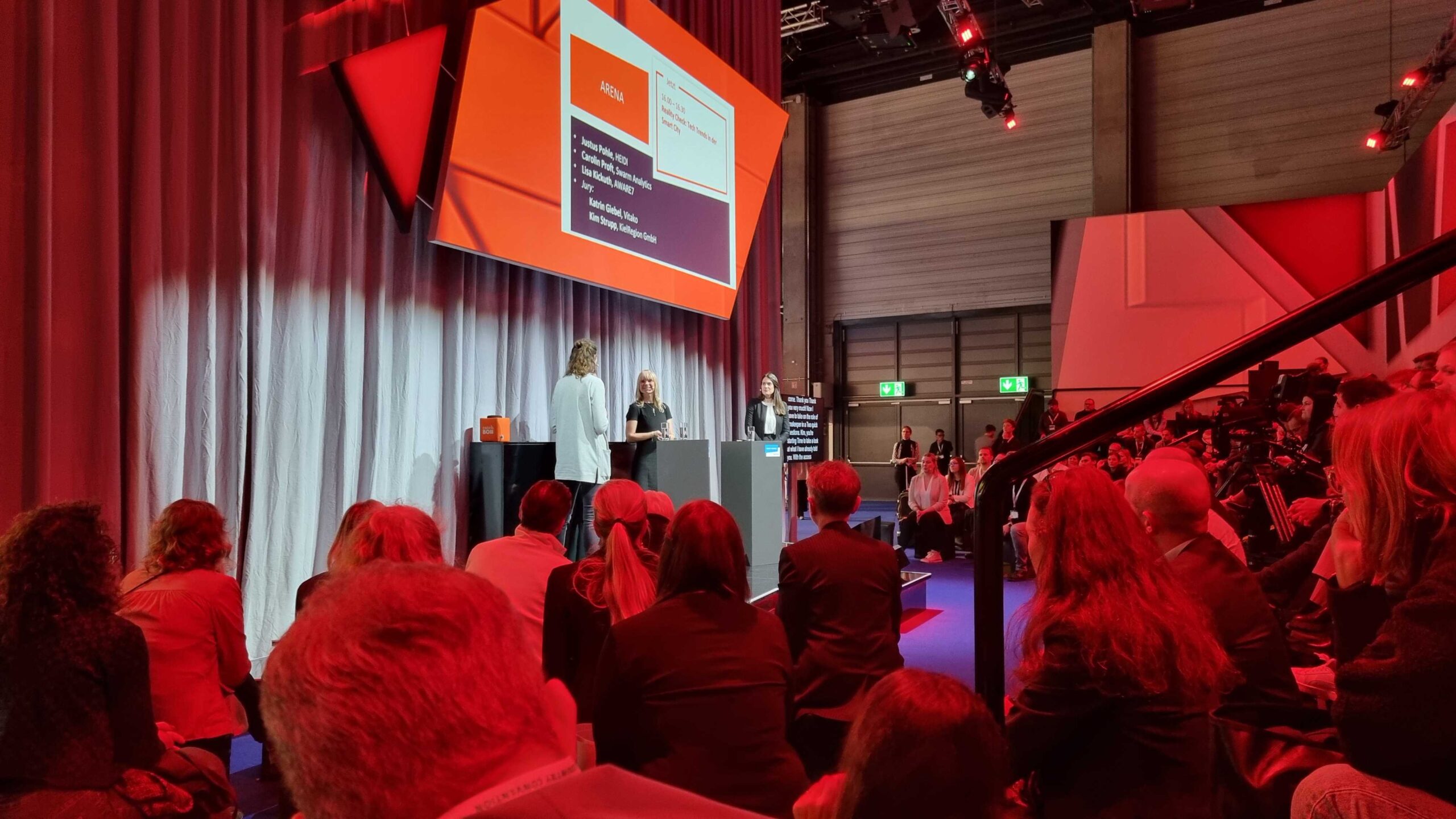Our AI-supported traffic analysis provides cities and municipalities with a powerful tool for ongoing travel time analysis. Current and comprehensive traffic analyses with automated detection of vehicle classes, speeds, movement directions, and much more – these are the foundations for evidence-based traffic planning in cities and municipalities. They are indispensable tools in the search for solutions to traffic congestion and the rapidly advancing climate change. Swarm Analytics now expands its traffic analysis and planning system with the new feature of journey time capture (“Journey Time”). Journey time reveals which vehicle classes are traveling for how long on which routes, a particularly powerful feature that has been at the top of the wish list for all transportation experts for years. Now, it is available.

From now on, these data can be collected permanently, automatically, and fully GDPR-compliant, providing a foundation for fact-based traffic planning and management.
Key Requirement: Full GDPR Compliance
For journey time, whether for cars, public transport, or trucks, a vehicle must be clearly identifiable over spatial and temporal distances. The challenge is that personal information must not be recognized or stored, in compliance with GDPR. Swarm Analytics’ solution is based on AI-assisted evaluation of video data from standard IP cameras. The information is converted on-site, without ever being stored, into GDPR-compliant encrypted strings (so-called hashes), which are then further encoded. Personal identification is thus impossible.
In the Short or Long Term: Permanent Journey Time Capture is Essential for Modern Traffic Planning
Real-time data is provided that can be immediately utilized by traffic engineers and traffic information systems to address current issues such as diversions, breakdowns, and wait times – all crucial information for people on the move. However, the long-term benefit is even more significant: vehicle type, speed, and route load – these data were either non-existent or very sporadic. With them, strategic measures can be reliably simulated thanks to the vast, dynamic database.
By integrating information such as travel times and traffic frequencies, it is ensured that any planning is based on the latest insights and not on data that has been outdated for years. This allows for the first time the use of robust, up-to-date studies as a basis for costly investment decisions and the meaningful shaping of a data-driven traffic transition.


Journey Time Captures the Traffic Mix
From journey time data, the distribution of traffic within the entire road network is derived, providing valuable insights into how traffic flows, segmented by vehicle classes. This helps understand how people perceive whether and how smoothly traffic is moving – or congested. This enables the categorization of traffic into various user groups:
- Commute traffic: Recurring at fixed times and can be optimized through appropriate prioritization (e.g., green wave inwards in the morning).
- Through or transit traffic: Merely passing through a location but still burdening the road network. Particularly in vacation and holiday regions, there can be a noticeable increase in traffic.
- Shopping traffic or short-term visits: Undertakes targeted trips to areas (e.g., shopping centers, industrial areas) and leaves within two to four hours.
All these traffic types and many more use the same road network and are crucial for sustainable traffic planning. Traffic analysis systems come into play precisely here. Thanks to the Journey Time feature, they now have valuable data that simply did not exist before. The basis for any reasonable traffic control and for new ideas or approaches is as many reliable and comprehensible data as possible.
Innsbruck: Pioneer and Think Tank
The best example of the benefits and implementation of Journey Time in challenging traffic conditions is Innsbruck. In close collaboration with the fifth-largest city in Austria, Swarm Analytics has set up a productive test installation. Since November 2022, at four test routes that practically combine all challenges for automatic detection and evaluation, counting, classification, and journey time calculation have been ongoing.
It’s a win-win situation: Swarm Analytics demonstrates the daily benefits with minimal effort and continuously optimizes the system according to real requirements. Innsbruck, in turn, enjoys all the advantages of real-time data and a reliable overview of the demanding traffic hotspot in the city area, including “aha moments,” such as the fact that closing roads can improve traffic flow, leading to effective improvements.







